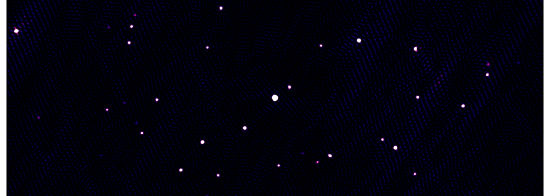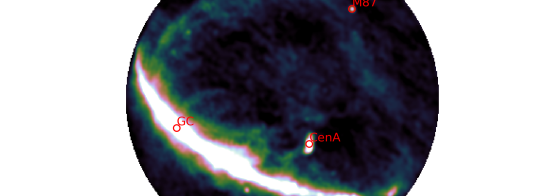SKA-Low achieves ‘first fringes’


First fringes refers to the successful correlation of data from separate antennas stations – in this case two stations – signifying that SKA-Low has begun to work as an interferometer.
Both of the SKA Observatory’s telescopes – SKA-Low in Western Australia and its counterpart SKA-Mid in South Africa’s Northern Cape – are radio interferometers. They work by combining data from antennas spread over large distances, creating virtual telescopes equivalent in size to the separation between the furthest antennas for each telescope.
By using interferometry, a technique which uses the interference of electromagnetic waves to extract information, the two SKAO’s telescopes will transform our understanding of the Universe.
“This is the day that the SKA Observatory as a scientific facility was born,” SKAO Director-General Professor Philip Diamond said.
This milestone comes only a month after the first image from one SKA-Low station was released in early August, and six months since the first antennas were installed on site at Inyarrimanha Ilgari Bundara, the CSIRO Murchison Radio-astronomy Observatory, in March 2024.
SKA-Low Lead Commissioning Scientist Dr George Heald said this was a big moment for the astronomy community.
“Finding a strong correlated signal between our first two SKA-Low stations means that the instrument can now function as a radio interferometer,” he said.
“Now we can scale up the scientific power of SKA-Low as we add more and more stations over the next few years, ultimately enabling us to search for the unknown.”
The graphics revealing first fringes show the correlated signal from two SKA-Low antenna stations. A shift in the signal can be seen as the radio galaxy Centaurus A passes through the observation.
SKA-Low’s antennas do not move, instead using a technique called beamforming to digitally point at different parts of the sky. The data is then combined and correlated to make sense of the radio signals which arrive at each antenna at marginally different times.
“This is an incredible milestone, one that has been achieved by the work of hundreds of people over many years. Many astronomers, including myself, are so excited for what comes next as this telescope continues to scale,” Dr Heald says.
“SKA-Low became a radio interferometer today and I am so proud, as well as excited for what comes next!”
Across the Indian Ocean in South Africa, assembly of the second SKA-Mid telescope dish is also well underway. Following the assembly of the first dish in July, the second is expected to have its main reflector lifted onto the pedestal in the coming weeks.
In Australia, the SKAO is collaborating with CSIRO, Australia’s national science agency, to build and operate the SKA-Low telescope.
These scientific works use data obtained from Inyarrimanha Ilgari Bundara, the CSIRO Murchison Radio-astronomy Observatory. We acknowledge the Wajarri Yamaji as the Traditional Owners and Native Title Holders of the observatory site.
A birds eye view of the ‘S8’ cluster on the southern spiral arm of the SKA-Low telescope, showing the two stations involved in first fringes.







